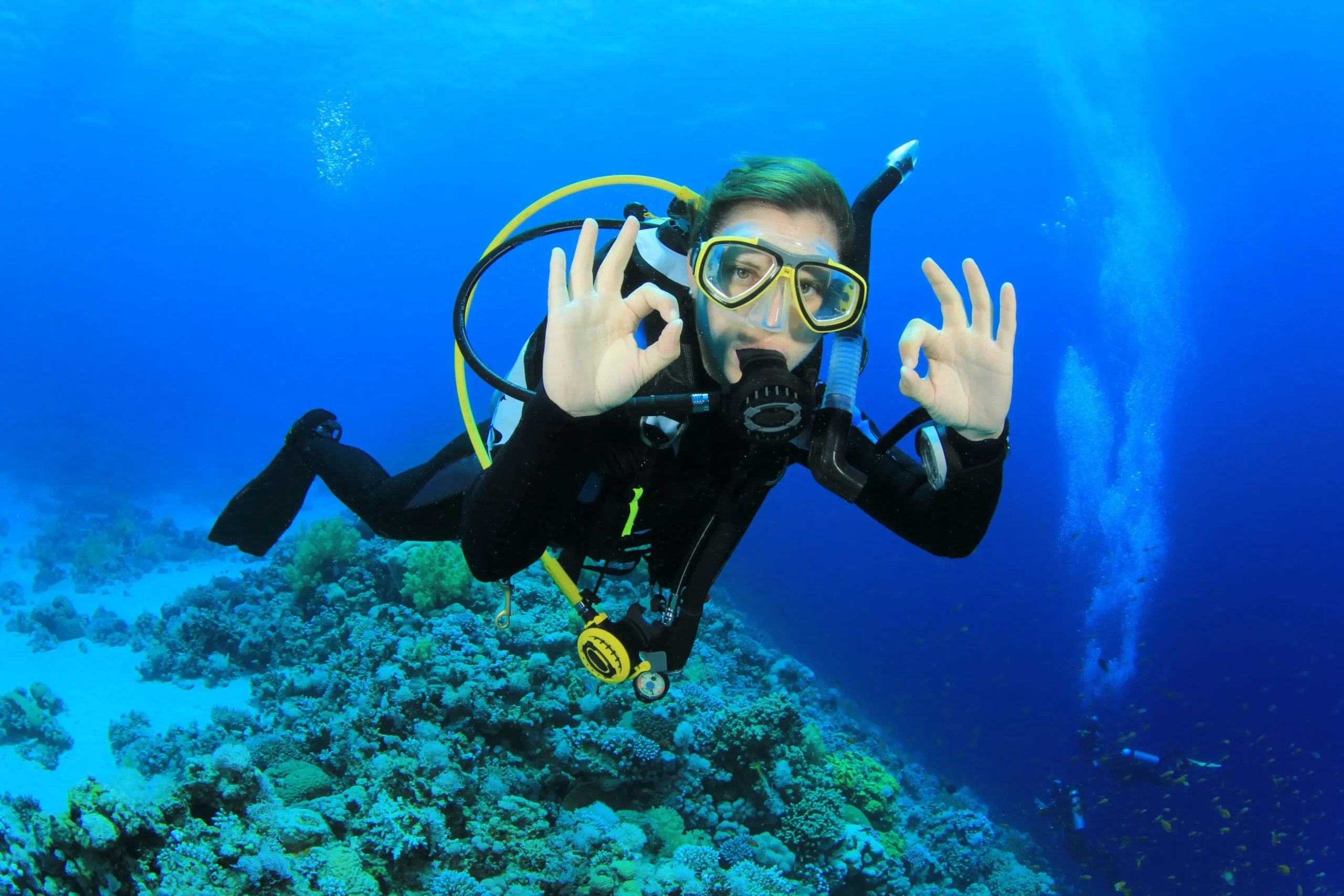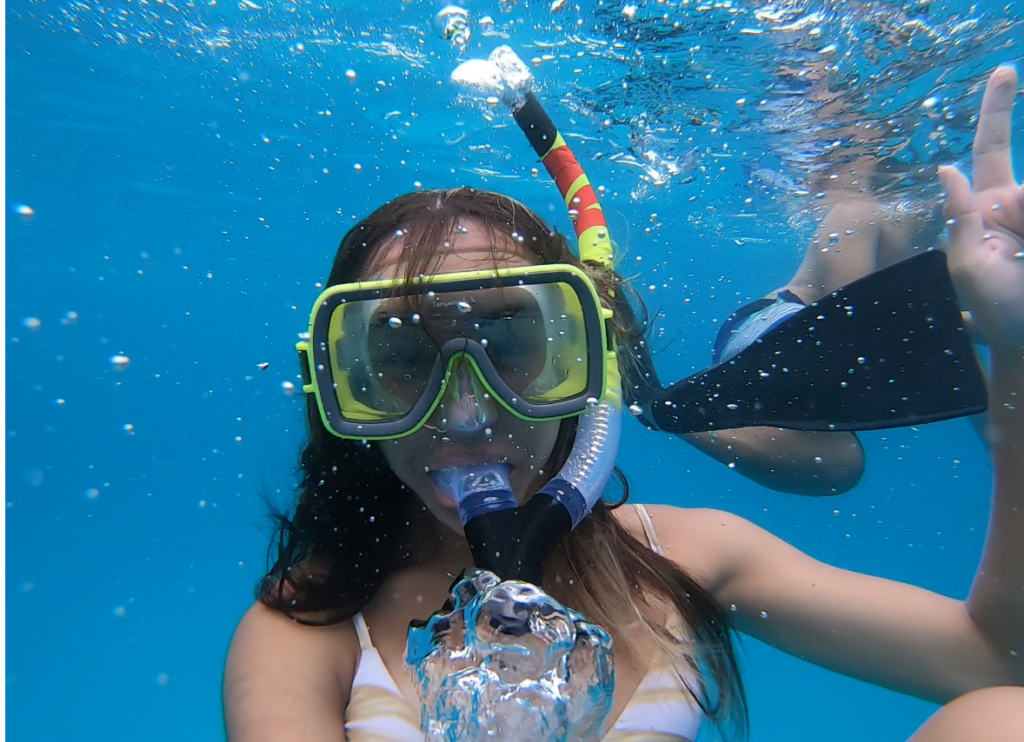
The Red Sea is one of the most breathtaking marine destinations in the world — a natural wonderland that stretches along Egypt’s eastern coast, drawing travelers from across the globe. With crystal-clear waters, vibrant coral reefs, and an incredible diversity of sea life, it’s a paradise for anyone who loves the ocean. But when it comes to exploring this underwater treasure, many visitors face a big question: Should I go snorkeling or scuba diving in the Red Sea?
Both activities promise unforgettable experiences, but they cater to different types of travelers. In this guide, we’ll take a deep dive (pun intended) into snorkeling vs. scuba diving in the Red Sea, comparing difficulty levels, equipment, pricing, marine encounters, safety tips, and tour options. By the end, you’ll know which underwater adventure fits your travel style best.
1. The Magic of the Red Sea: Why It’s a World-Famous Destination
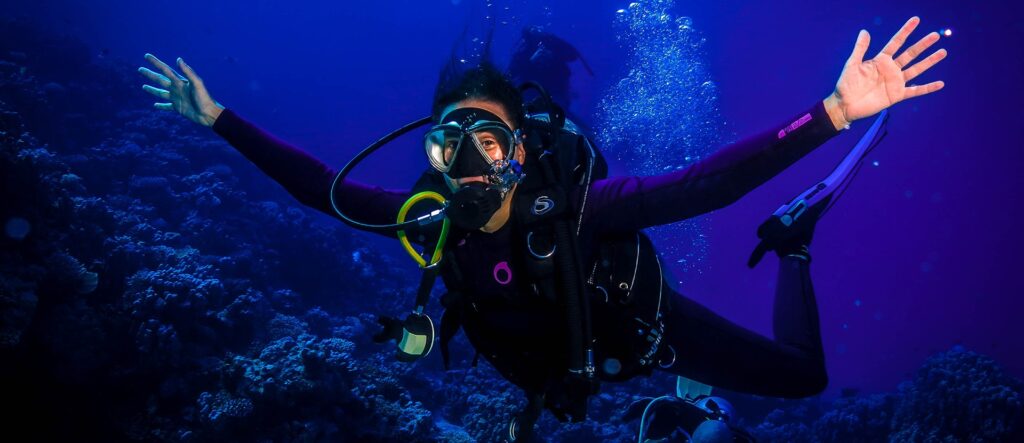
Before comparing snorkeling and scuba diving, it’s worth understanding why the Red Sea stands out globally.
- Unmatched Visibility: The Red Sea offers visibility of up to 30 meters, thanks to low rainfall and minimal sediment.
- Warm Water All Year Round: Temperatures range from 22°C in winter to 29°C in summer — perfect for swimming anytime.
- Rich Biodiversity: Home to over 1,200 species of fish and 200 types of coral, many of which are found nowhere else on Earth.
- Accessibility: Whether you’re staying in Hurghada, Marsa Alam, or Sharm El-Sheikh, you’re just a short boat ride away from world-class reefs.
This combination of warmth, color, and clarity makes it an underwater playground suitable for both beginners and experienced divers.
2. What Is Snorkeling? The Simple Gateway to the Red Sea
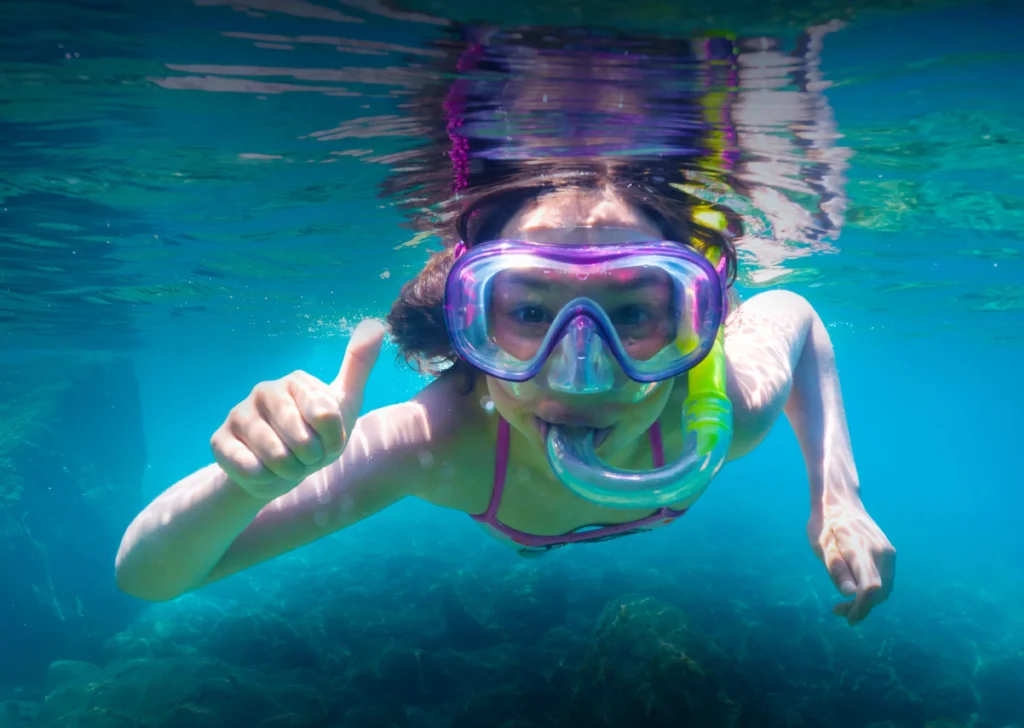
Snorkeling is the easiest and most accessible way to discover the underwater beauty of Egypt. You simply wear a mask, snorkel (breathing tube), and fins to float on the surface and look down at the reefs below.
Who It’s For
Snorkeling is ideal for:
- Families with children
- Non-swimmers who want a safe ocean experience (with life jackets)
- Travelers short on time or on a budget
- Anyone who prefers a relaxing, low-effort way to see marine life
Highlights of Snorkeling in the Red Sea
- You can snorkel directly from the beach in many resorts or join a boat excursion to nearby reefs.
- Popular snorkeling sites include Giftun Island, Orange Bay, Abu Dabbab, and Ras Mohammed National Park.
- Common sightings: colorful reef fish, moray eels, butterflyfish, parrotfish, and even sea turtles or dolphins in lucky moments.
3. What Is Scuba Diving? The Deep Dive Experience
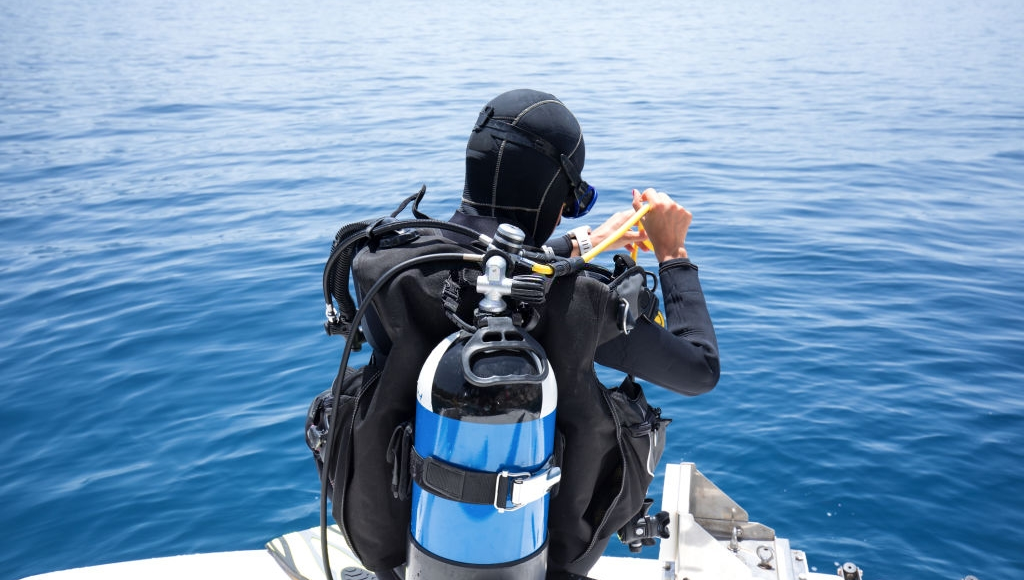
Scuba diving goes beyond the surface, allowing you to explore the Red Sea’s reefs up close and in depth. Equipped with an air tank, regulator, buoyancy control device (BCD), and wetsuit, divers descend to depths ranging from 5 to 30 meters — or even deeper for certified professionals.
Who It’s For
Scuba diving suits:
- Adventure seekers wanting an immersive experience
- Travelers interested in marine life photography or exploration
- Those willing to learn basic diving skills or obtain certification
- People comfortable in open water and ready for a bit of training
Highlights of Diving in the Red Sea
- The Red Sea is consistently ranked among the top 5 diving destinations in the world.
- Iconic dive spots include Elphinstone Reef, Abu Dabbab, Thistlegorm Wreck, and Giftun Reef.
- Common encounters: giant sea turtles, reef sharks, manta rays, lionfish, and even pods of dolphins.
4. Comparing Snorkeling and Scuba Diving in the Red Sea
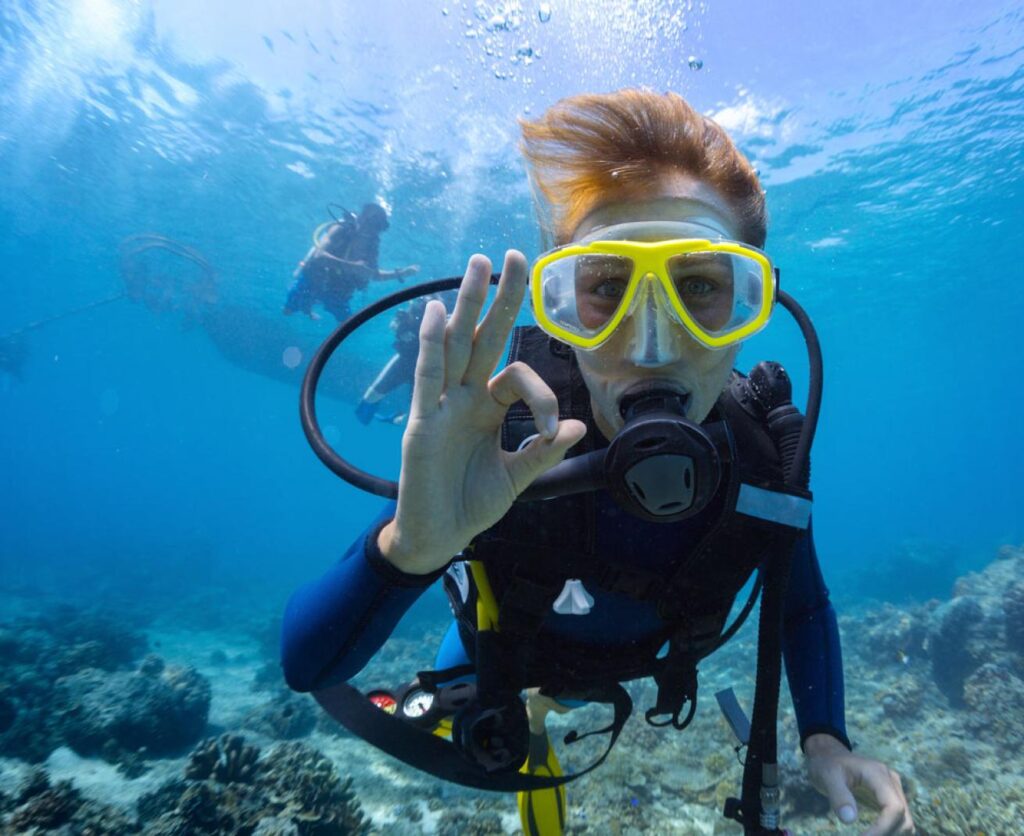
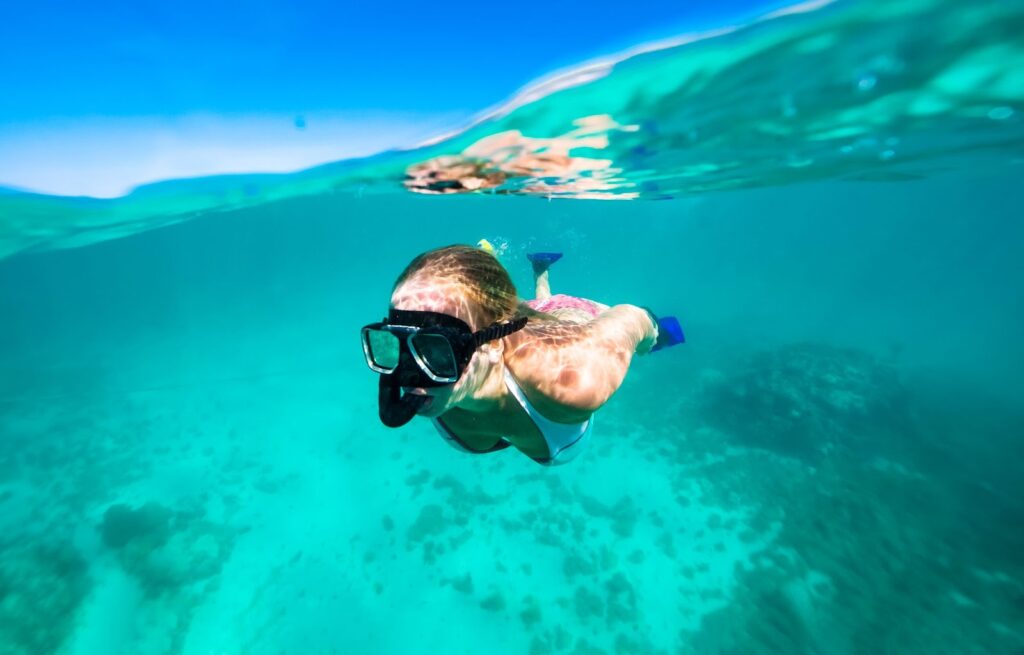
Let’s break down the main differences between snorkeling and scuba diving so you can decide which suits your interests and comfort level.
Difficulty Level
- Snorkeling: Easy and requires no certification. You only need to be comfortable in the water and know how to float.
- Scuba Diving: Requires training and, in most cases, a brief orientation or certification. Beginners can try “Introductory Dives” with an instructor.
Verdict: If you’re looking for something effortless, snorkeling wins. If you love adventure and don’t mind learning, diving offers a deeper thrill.
Equipment and Preparation
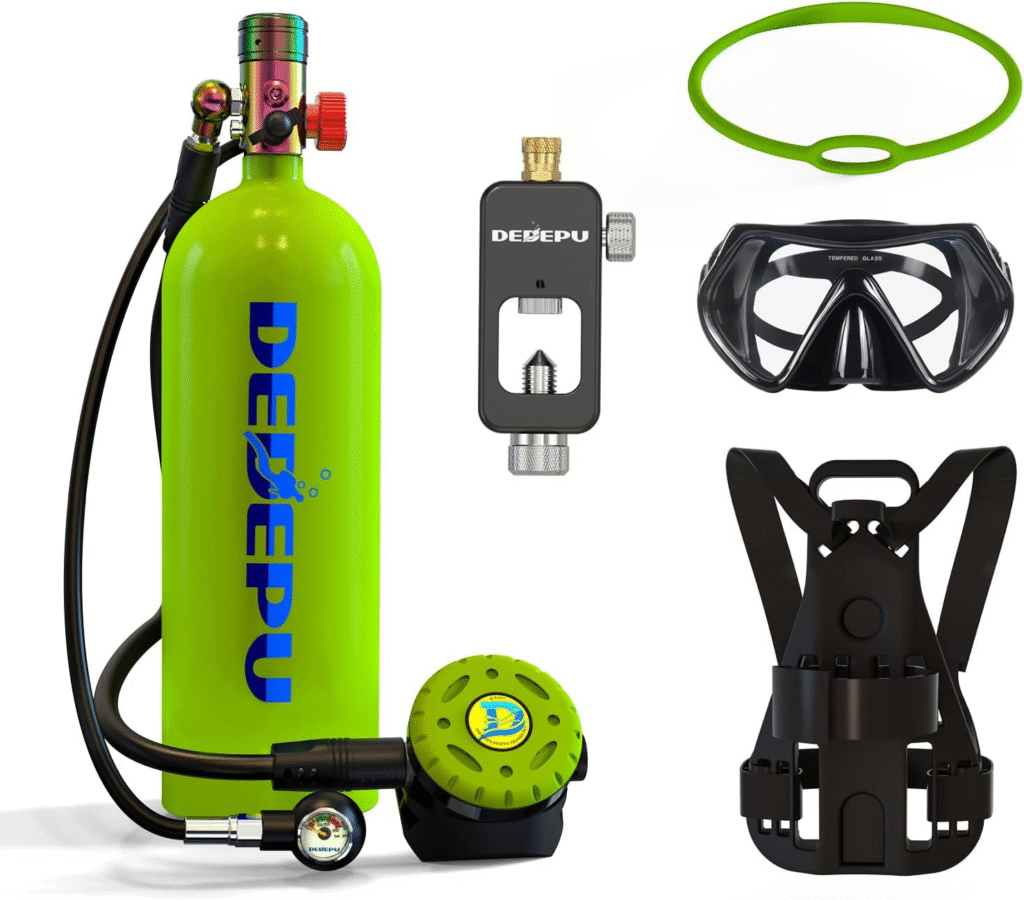
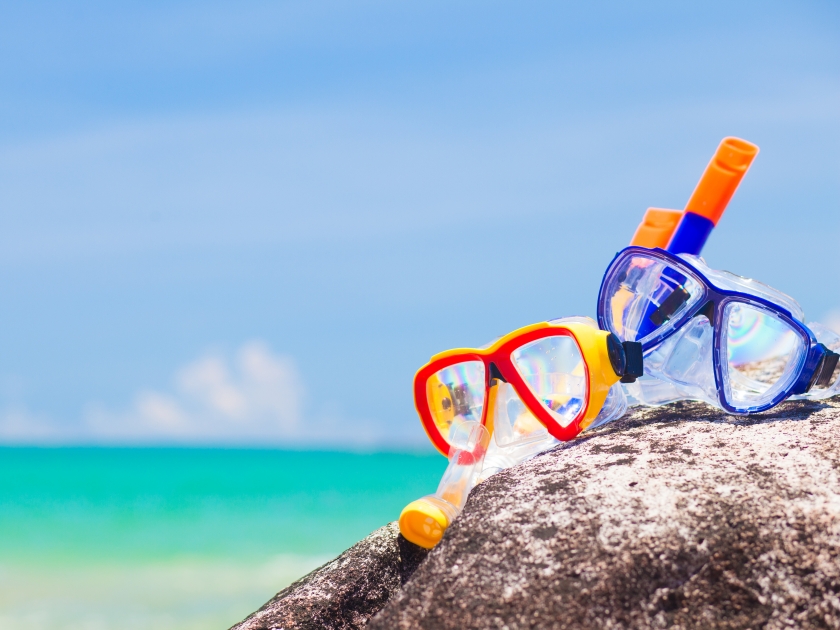
- Snorkeling Gear: Mask, snorkel, and fins (often provided on tours or by resorts).
- Scuba Diving Gear: Includes wetsuit, air tank, BCD, regulator, and gauges — provided and adjusted by professionals.
Verdict: Snorkeling requires minimal gear, while diving involves more setup but offers a more immersive experience.
Depth and Duration
- Snorkeling: Surface-level, usually between 0–3 meters deep.
- Scuba Diving: Depths of 5–30 meters, with dive times averaging 30–50 minutes depending on air supply and skill level.
Verdict: Snorkeling gives you a bird’s-eye view; diving puts you right in the heart of the reef.
Marine Life Encounters
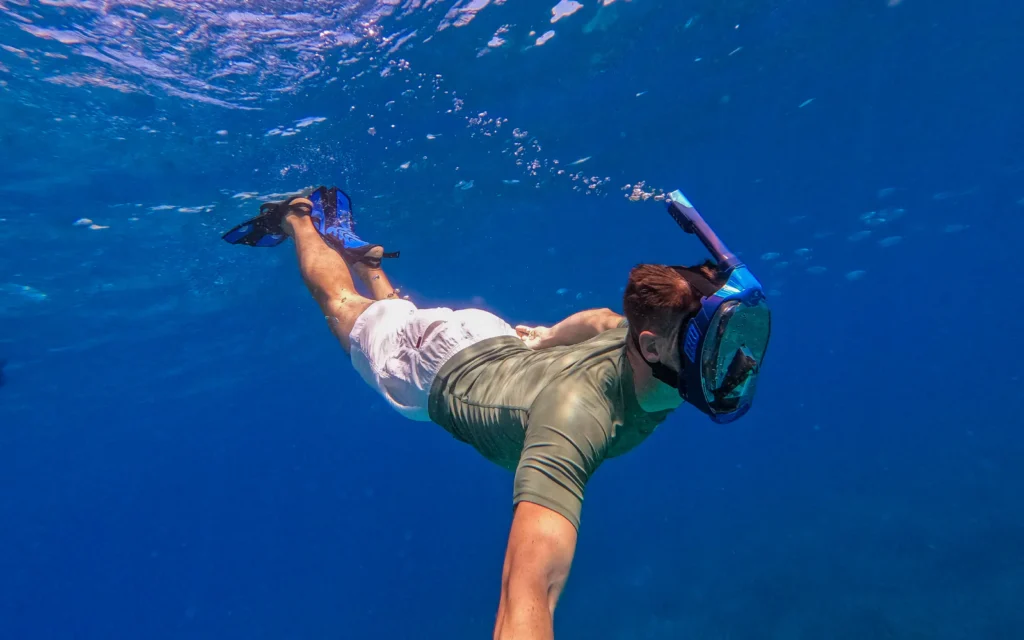
- Snorkelers see vibrant corals and colorful reef fish near the surface.
- Divers explore deeper coral walls, caves, and shipwrecks, meeting larger species like sea turtles, rays, and sometimes reef sharks.
Verdict: Both offer incredible sights, but divers get closer to the rare and bigger creatures.
Price Comparison
- Snorkeling Excursions: Usually cost between $25–$50 for a half- or full-day tour, including equipment and lunch.
- Introductory Dives: Range from $60–$100 per dive, including equipment and instructor guidance.
- Full Diving Courses (PADI Certification): Around $350–$500 for a 3–4 day course.
Verdict: Snorkeling is budget-friendly; diving is an investment but pays off for serious ocean lovers.
Safety and Comfort
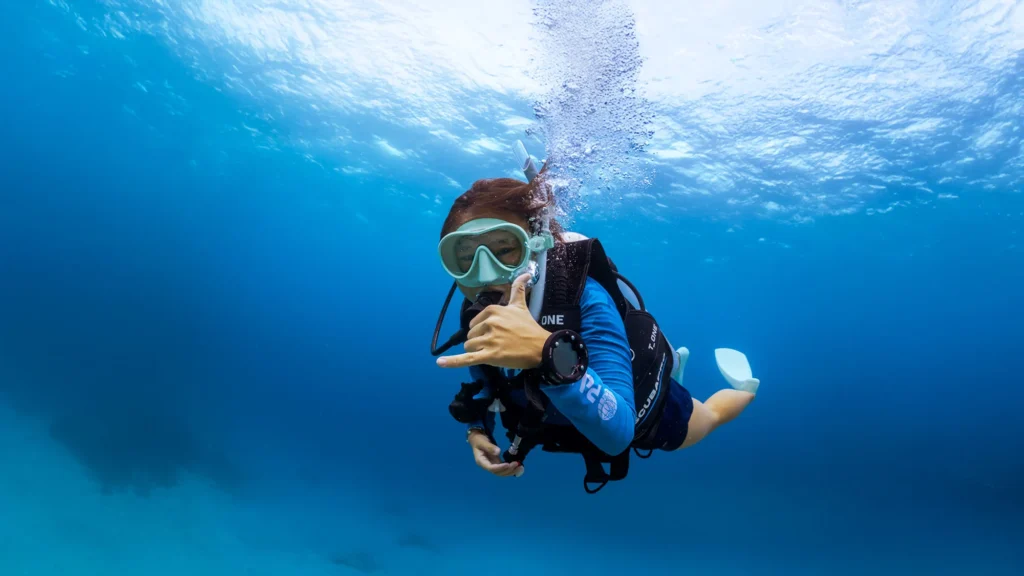
Both snorkeling and scuba diving in the Red Sea are very safe when conducted with licensed tour operators.
Tips for Safe Snorkeling:
- Always wear a life vest if you’re not a confident swimmer.
- Avoid touching coral or standing on the reef — it’s fragile and can be sharp.
- Stay close to your group and boat.
Tips for Safe Diving:
- Never dive alone.
- Follow your instructor’s briefing and depth limits.
- Equalize your ears often and ascend slowly to avoid pressure injuries.
- Stay hydrated and avoid alcohol before dives.
5. Popular Snorkeling and Diving Locations in the Red Sea
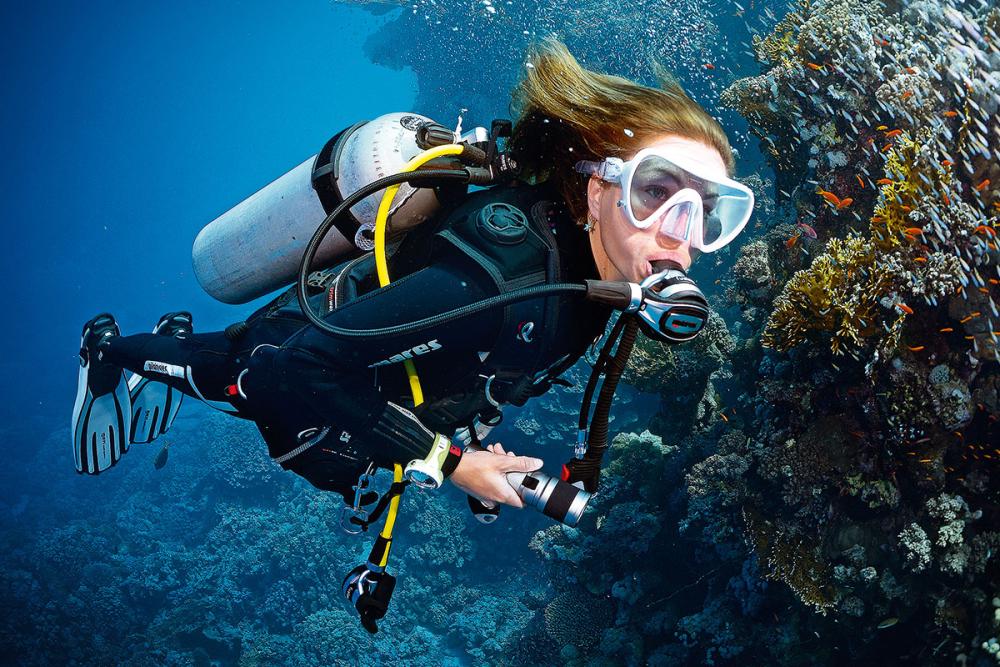
Hurghada
Hurghada is one of the top destinations for both beginners and experienced divers.
- Snorkeling Hotspots: Giftun Island, Paradise Island, and Orange Bay.
- Top Dive Sites: Abu Ramada, Shaab El Erg (famous for dolphins), and Carless Reef.
Many boat tours include two snorkeling or diving stops, a buffet lunch, and hotel transfers.
Marsa Alam
Marsa Alam, located further south, is known for its pristine reefs and higher chances of spotting larger marine animals.
- Snorkeling Highlights: Abu Dabbab Bay — home to sea turtles and dugongs (sea cows).
- Diving Highlights: Elphinstone Reef — famous for oceanic whitetip sharks.
Sharm El-Sheikh
Another Red Sea favorite, especially for divers.
- Snorkeling Spots: Ras Mohammed National Park, Tiran Island.
- Diving Hotspots: The Thistlegorm Wreck (one of the world’s top wreck dives), Jackson Reef, and Shark Reef.
6. Marine Life Encounters – What You Might See

The Red Sea’s biodiversity is astonishing. Here’s what you can expect depending on your activity:
For Snorkelers
- Brightly colored reef fish (parrotfish, butterflyfish, clownfish)
- Soft and hard corals near the surface
- Giant clams and starfish
- Occasional sea turtles or dolphins
For Divers
- Larger creatures such as manta rays, Napoleon wrasses, moray eels
- Reef sharks (harmless to humans)
- Historic shipwrecks covered in coral
- Schools of barracuda or jacks
Every encounter feels like swimming in a living aquarium — one that constantly surprises you.
7. Environmental Responsibility and Eco-Friendly Practices
Whether snorkeling or diving, it’s crucial to protect the Red Sea’s delicate ecosystem. The reefs are living organisms that take centuries to grow but can be damaged in seconds.
Responsible Tips:
- Never touch or step on coral.
- Use reef-safe sunscreen that doesn’t harm marine life.
- Avoid feeding fish or chasing animals.
- Choose eco-certified tour operators who respect conservation rules.
- Refrain from collecting shells or coral souvenirs.
By practicing sustainable tourism, you ensure that the beauty of the Red Sea will last for generations to come.
8. Choosing the Right Tour
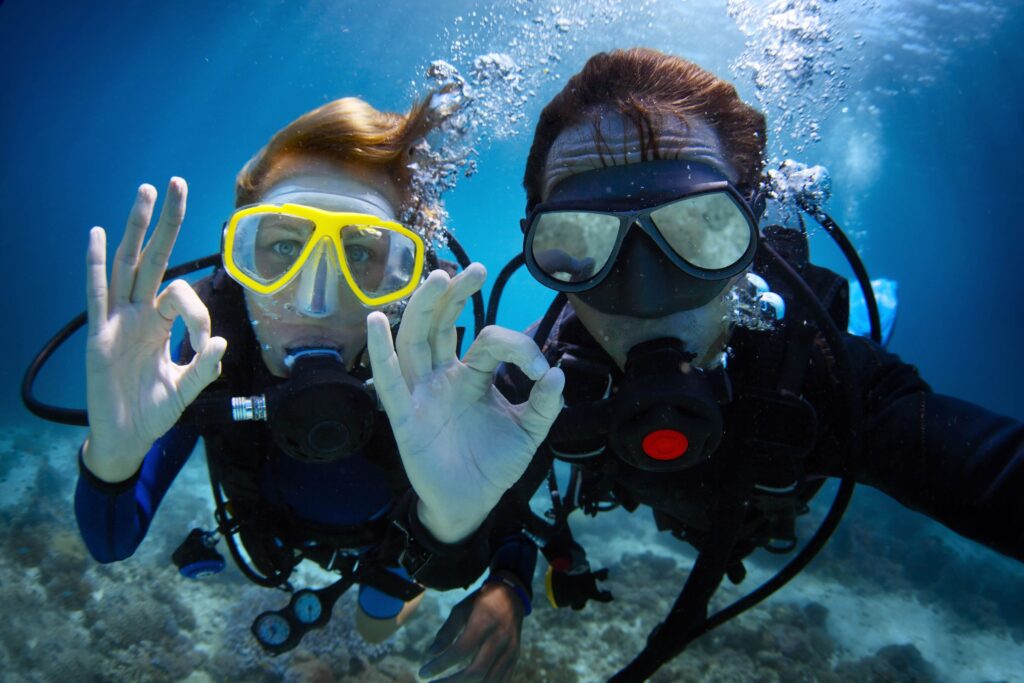
Both snorkeling and diving tours are widely available from all major resorts along Egypt’s Red Sea coast.
Snorkeling Tour Options
- Half-Day Trips: Ideal for families or beginners.
- Full-Day Boat Trips: Include two or three snorkeling stops and lunch.
- Private Charters: Great for couples or small groups who prefer privacy.
Scuba Diving Tours
- Introductory Dives: For non-certified beginners.
- Daily Dive Trips: For certified divers, often with two dives per day.
- Liveaboard Cruises: Multi-day diving trips that explore remote reefs far from shore.
Always choose licensed centers with experienced guides, well-maintained equipment, and positive reviews.
9. Combining Snorkeling and Diving in One Trip
Can’t decide between snorkeling and diving? The good news is — you don’t have to. Many Red Sea excursions combine both activities in a single tour, especially in Hurghada and Marsa Alam.
For example:
- Mixed Groups: Couples or friends can snorkel and dive on the same boat.
- Try-Dive Packages: Start your day with snorkeling, then move to a guided shallow dive with an instructor.
- House Reefs: Resorts often have their own coral reefs accessible for both snorkelers and divers, perfect for flexible exploration.
This combination allows you to experience the best of both worlds — the relaxed freedom of snorkeling and the deeper excitement of diving.
10. Which One Should You Choose?
Still unsure whether snorkeling or scuba diving is better for you? Here’s a quick summary:
| Category | Snorkeling | Scuba Diving |
|---|---|---|
| Difficulty | Easy, no training required | Requires training or instructor |
| Depth | 0–3 meters | 5–30 meters |
| Marine Life | Colorful reef fish, coral gardens | Larger animals, wrecks, deep reefs |
| Equipment | Simple (mask, snorkel, fins) | Advanced gear (tank, wetsuit, regulator) |
| Duration | Flexible, short sessions | 30–50 minutes per dive |
| Price Range | $25–$50 | $60–$100 per dive or $400 for a course |
| Experience Level | Beginners, families | Adventurous travelers |
| Best Choice For | Casual explorers | Passionate ocean lovers |
In summary:
- Choose snorkeling if you prefer easy, low-cost, and family-friendly exploration.
- Choose scuba diving if you’re seeking adventure, depth, and a more immersive marine encounter.
Either way, the Red Sea will leave you speechless.
11. Practical Travel Tips for a Red Sea Adventure
- Best Time to Visit: March to May and September to November offer warm water and calm conditions.
- What to Bring: Swimsuit, towel, underwater camera, reef-safe sunscreen, water shoes, and a light cover-up.
- Health & Safety: Stay hydrated, avoid excessive sun exposure, and listen to your guides.
- Insurance: Make sure your travel insurance covers water activities and diving (if applicable).
12. Final Thoughts – Discover Your Red Sea Adventure
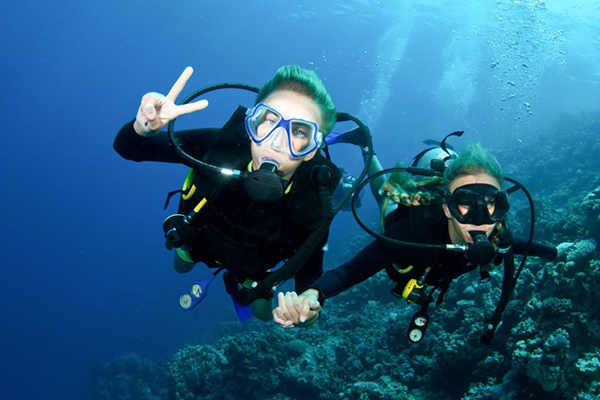
Whether you float gently above the reefs or dive into their hidden depths, exploring the Red Sea is an experience like no other. Snorkeling and scuba diving both offer a window into one of the most extraordinary ecosystems on Earth — one filled with color, motion, and life.
Snorkelers will love the simplicity and accessibility of gliding over coral gardens, while divers will cherish the serenity of the deep blue, where silence meets awe.
So, when planning your next vacation to Hurghada, Marsa Alam, or Sharm El-Sheikh, think about what kind of explorer you are. The Red Sea doesn’t just offer two ways to experience the ocean — it offers two entirely different adventures that will stay with you long after you’ve dried off your fins.
Whichever you choose, you’ll leave Egypt with salt on your skin, a camera full of memories, and a heart full of wonder for the underwater world.

